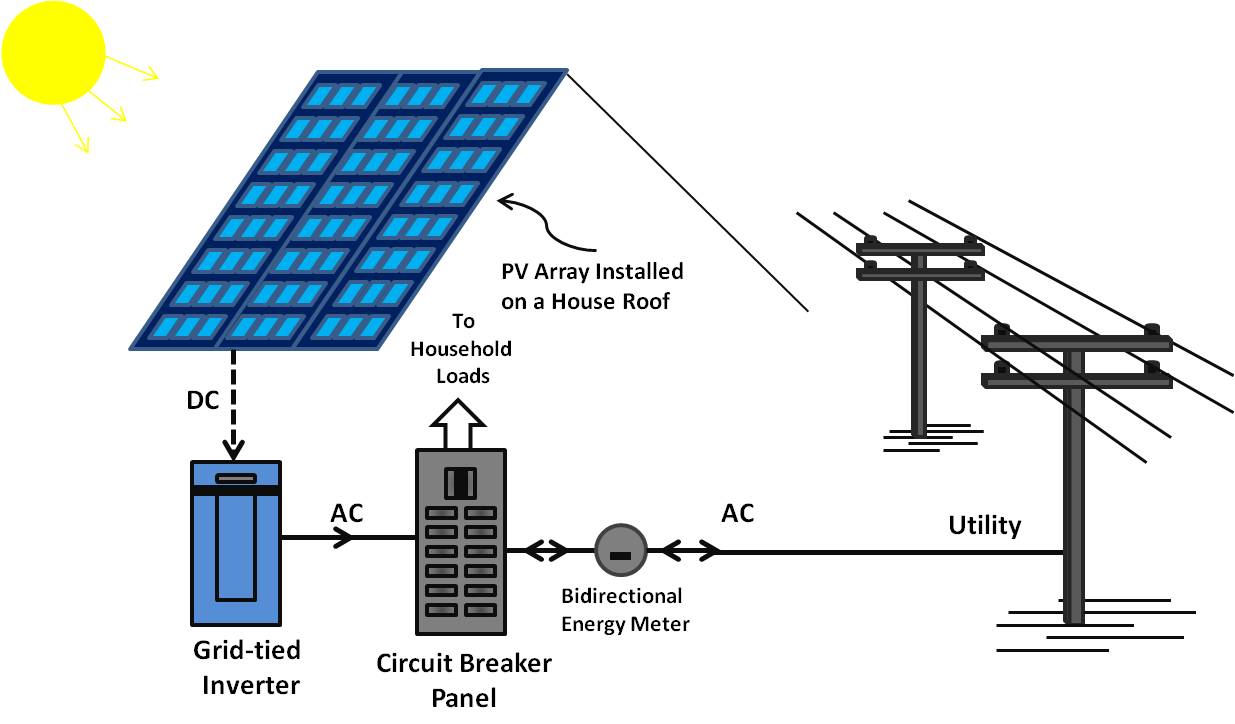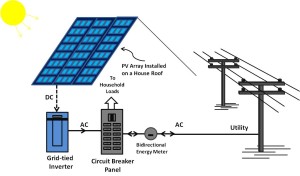
Solar energy is one of the renewable energy sources which is clean, unlimited, and free. Solar energy is available and easy to use. We can convert it to electricity by using photovoltaic cells. We can arrange these cells to make a photovoltaic panels. They produce a direct current of electricity [DC power], then we use a power inverter to convert it to alternating current electricity [AC power] to use in many applications. However, to use the solar energy as a source of electricity by using photovoltaic panels and without a backup battery bank[On-Grid solar power system], you have to design a system by following a couple of very important steps.
The First step is estimating the total consumption of the energy of your appliances and loads. You should calculate the power of every appliance and then multiply the power times the number of operating hours for each appliance. For example, I use a laptop everyday which consumes a power of 50 watts with 3 hours every day as average, then the energy that my laptop consumes is 50 watts times 3 hours which equal 150 watts in hour every day. And if I use a TV which consumes the energy of 80 watts an hour every day ,then the total daily consumption of energy is equal to 150 W.h plus 80 W.h [230 watts an hour per day]. Therefore, I need the solar system to supply 230 watts in hour every day to cover my usage.
The Second step is sizing the power inverter. The electricity we use to power our appliances is alternative current electricity [AC power], and the electric voltage is 110 or 220 volts, and the solar panel generates direct current electricity [DC power] with electric voltage 12 or 24 or 48 volts like the battery. So we have to use a power inverter which converts electricity from DC to AC. Now if I should supply 230 watts an hour to a house, then the output power of the inverter should be 230 watts. But because the efficiency of the inverter is not 100% ,we have to consider the loss in power by the inverter. For example, if the efficiency of the inverter is 90% then the power that we should supply the inverter to give us 230 watts is 230 watts divided by 0.9 which equal 255.55 watts. Therefore, we will avoid the losses in the inverter and then we get the wanted power that the load needs. And we have to choose a power inverter that is able to carry at least 255.55 watts. So let us choose 300 watts power inverter.
The Third step is sizing the solar power panels. We have to know the power that every panel provides us with, and then determine the number of solar panels needed to supply the required amount of power to the load. For example, if we have 100-watts solar panels and we need to supply the load 300 watts of power, the number of solar panels needed is 3 panels.
Finally, if you live in an area that contains good solar radiation then you have to think about using a solar power system to get free electricity. By using solar system, you will save time and money. Designing an On-grid photovoltaic system is not hard. By following the previous steps we will get a perfect system. It is the time to use solar power energy to power your future freely, cleanly, and forever. The following figure shows an on-grid PV/solar system diagram.

For Citation, Copy the Following Text and Past It in Your References Page :
- Al-theanat, T., Eng. (2016, March 7). Introduction to design your own on-grid solar power system. Retrieved [todaysdate=”I, F jS Y”] from http://giee.org/introduction-design-grid-solar-power-system/












0 responses on "Introduction to design your own on-grid solar power system"